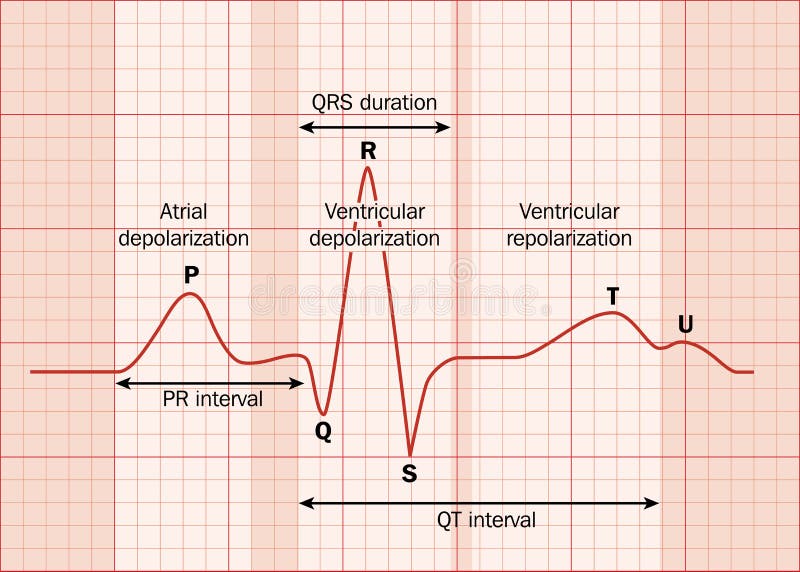How to read a Cardiac Rhythm Strip
Meghan Walter
NURS 609 Week 5
Cardiac rhythm strips although they look daunting are actually quite simple if you read them in a systematic manner. Once you know what's normal, it is easy to figure out what rhythm the patient is in. Let's follow some simple steps and figure them out together!
 |
| This is a diagram of the electrocardiograph. The waves and intervals are labeled in this picture. Image Retrieved from: https://www.dreamstime.com/stock-illustration-heart-ecg-ekg-showing-major-intervals-created-adobe-illustrator-eps-image46354916 |
Now that we know the basic image we are trying to look at, we will follow a methodical step by step approach to figure out what rhythm we are looking at! On the ECG paper we usually print out a six second recording. Each small box is 0.04 seconds, each large box (5 small boxes) are 0.2 seconds. We need to know this for our interpretations.
1. Is the rhythm regular or irregular?
For this you want to measure the distance between the r-waves (also called the R-R interval). If the distance between consecutive r-waves is the same, the rhythm is regular. If the distance is NOT the same, then we consider this to be irregular.
Let's try it:
Would this rhythm be regular or irregular? (HINT: Check out the distance between the r-waves)
 |
| Answer: The distance between the r-waves is the same, this is a regular rhythm. Image retrieved from: http://www.mauvila.com/ECG/ecg_fundamentals.htm |
2. Is there a p-wave for every QRS Complex? Are they normal in appearance?
In a normal sinus rhythm the p-wave precedes the QRS complex. They should be in a 1:1 ratio.
Let's try it:
Does this strip have a p-wave for every QRS?
 |
| Answer: Yes. There is a 1:1 ratio between p-waves and QRS complexes. They are normal shape . Image retrieved from: http://www.mauvila.com/ECG/ecg_fundamentals.htm |
3. What is the length of the PR interval? (normal is 0.12-0.2(Diehl, n.d.))
Let's try it:
What is the PR interval?
 | ||||||||
| Answer: The PR interval is approximately 0.16. The start of the p-wave to the r-wave is approximately 4 small boxes on the strip, so 4 x 0.04=0.16 seconds. Image retrieved from: http://www.mauvila.com/ECG/ecg_fundamentals.htm 4. What is the QRS complex measured at? It should be narrow, wide QRS complexes can be scary! (Normal is 0.04-0.08 (Diehl, n.d.)) Let's try it: What is the QRS complex measurement?
5. What is the QT interval? (Normal is 0.36-0.44 (Diehl, n.d.)) Let's try it: What is the QT interval?
Is this rhythm fast or slow? (To do this you can use the "300 Method." Count the number of large boxes between 2 consecutive r-waves and divide 300 by the number of boxes. You could also use the "1500" method where you count the number of small boxes between 2 consecutive r-waves and divide 1500 by the number of boxes (Diehl, n.d.)
Putting it ALL Together!
|




Comments
Post a Comment